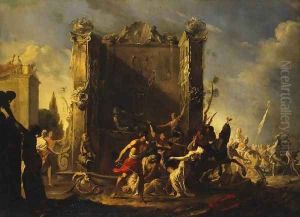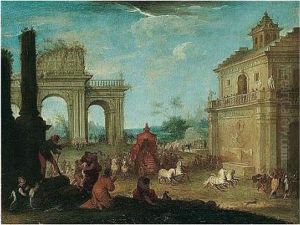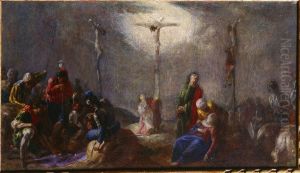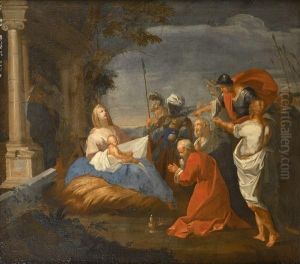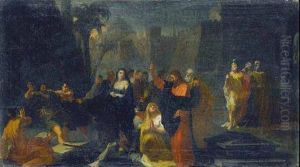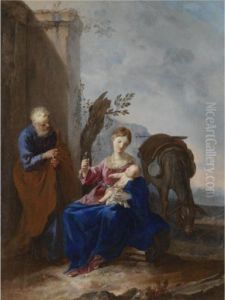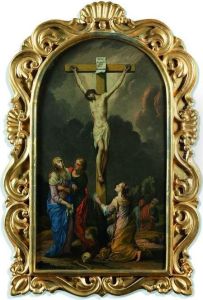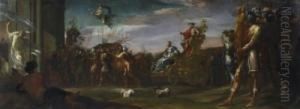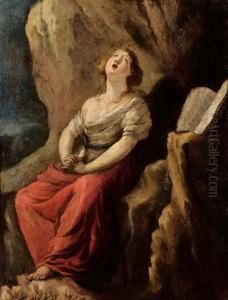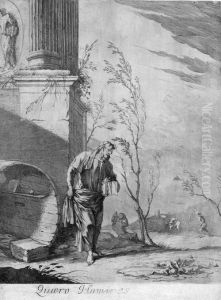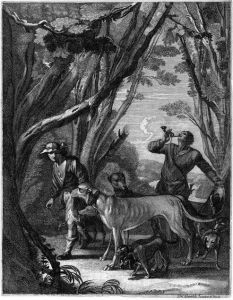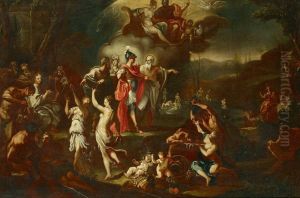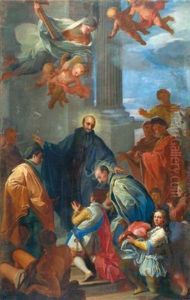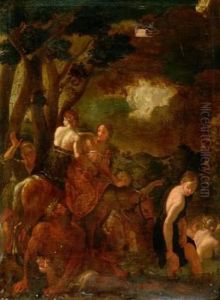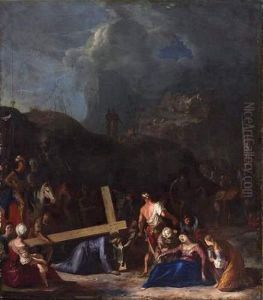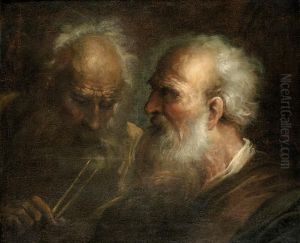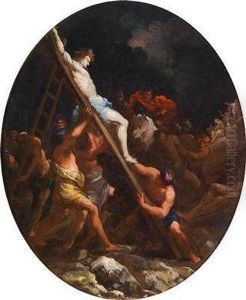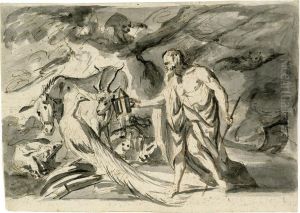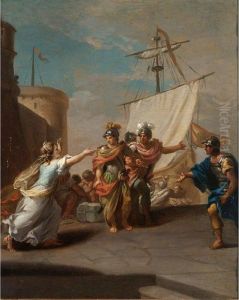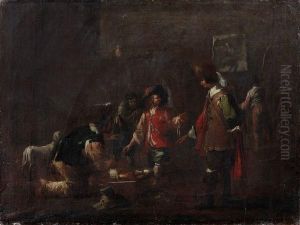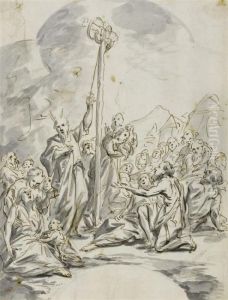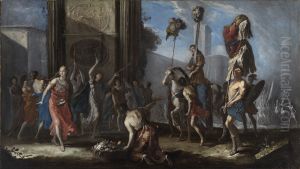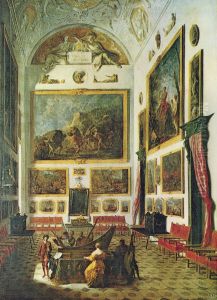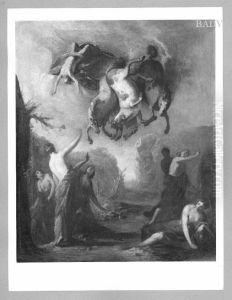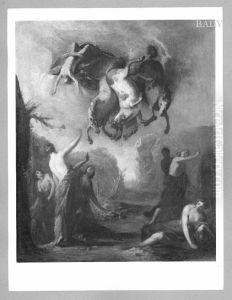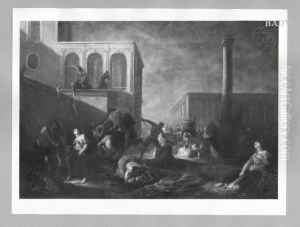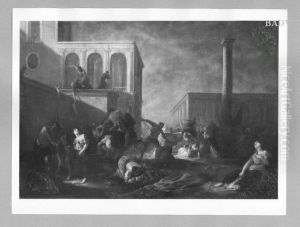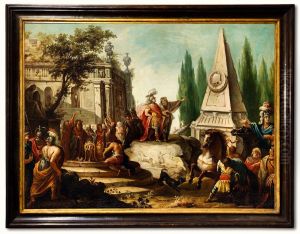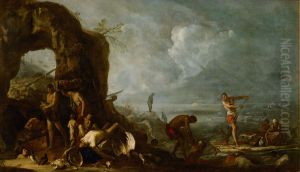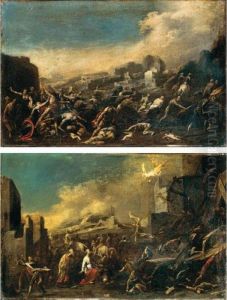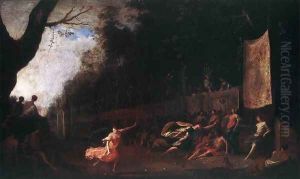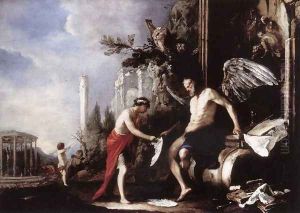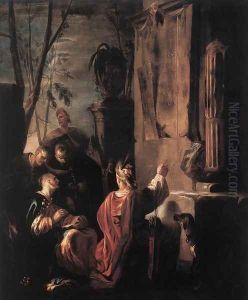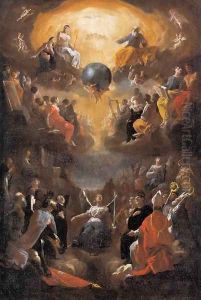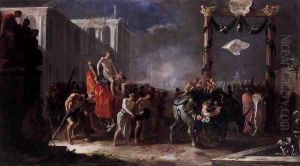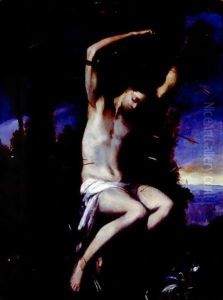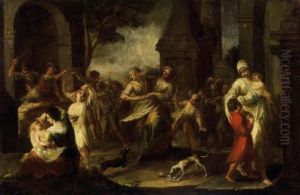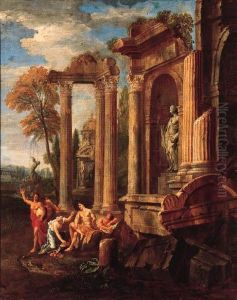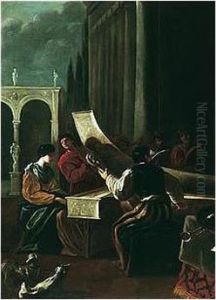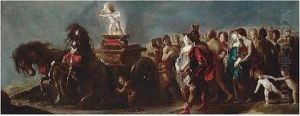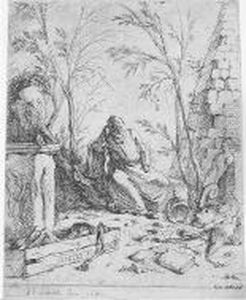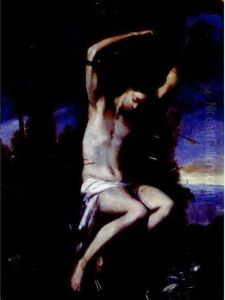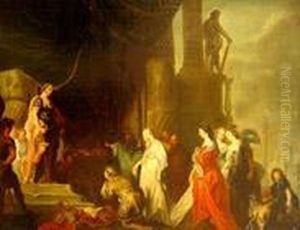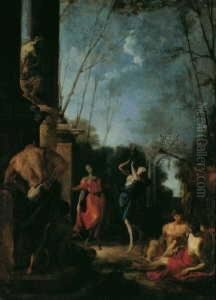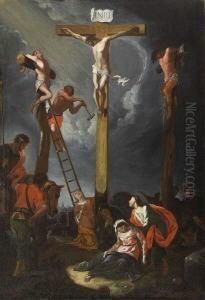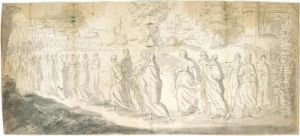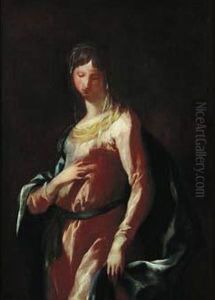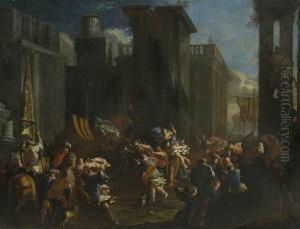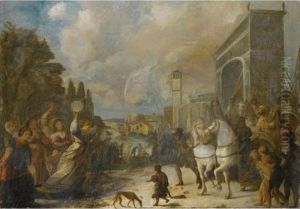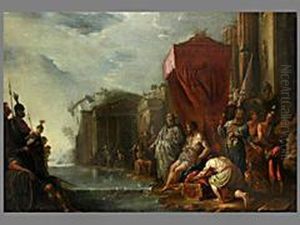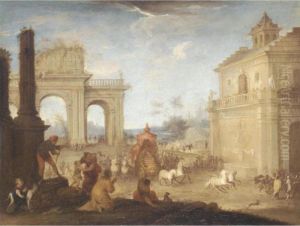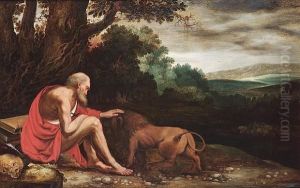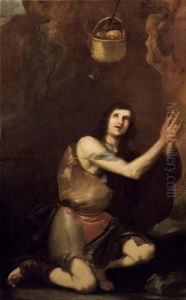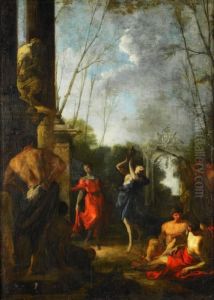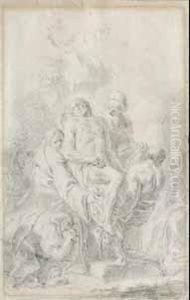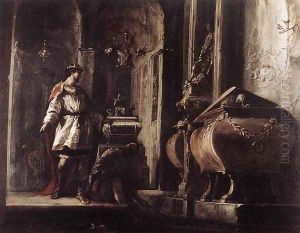Johann Heinrich Schonfeld Paintings
Johann Heinrich Schönfeld was a German Baroque painter, known for his dynamic compositions, dramatic use of light, and skillful depiction of movement. Born in Biberach an der Riß, Holy Roman Empire, in 1609, Schönfeld showed an early talent for art and was sent to Augsburg to train under a painter named Johann Ulrich Mayr. He further honed his skills in Italy, where he was profoundly influenced by the works of the Italian masters, particularly the dramatic chiaroscuro of Caravaggio and the dynamism of the Carracci family and Guido Reni.
Schönfeld's work often depicted mythological or biblical scenes, filled with vibrant colors and energetic figures. His travels in Italy, which lasted for about a decade, were crucial in the development of his style. After his time in Italy, Schönfeld returned to Germany, where he became one of the leading painters of the time. He worked in various cities including Augsburg, Nuremberg, and finally in Vienna, where he was appointed Imperial Court Painter.
Throughout his career, Schönfeld was known for his ability to blend the northern European painting tradition with the Italian Baroque style he had absorbed during his studies. His paintings are characterized by their theatricality and the dynamic arrangement of figures within the space, as well as his use of light to create a sense of depth and drama.
Schönfeld's work was influential in the development of German Baroque painting, and his legacy includes a number of pupils who carried on his painting style. Despite his success, his last years were marked by financial difficulties, and he died in relative obscurity in 1684 in Augsburg. Today, his work is recognized for its contribution to the Baroque movement and is held in various collections and museums throughout Europe.
